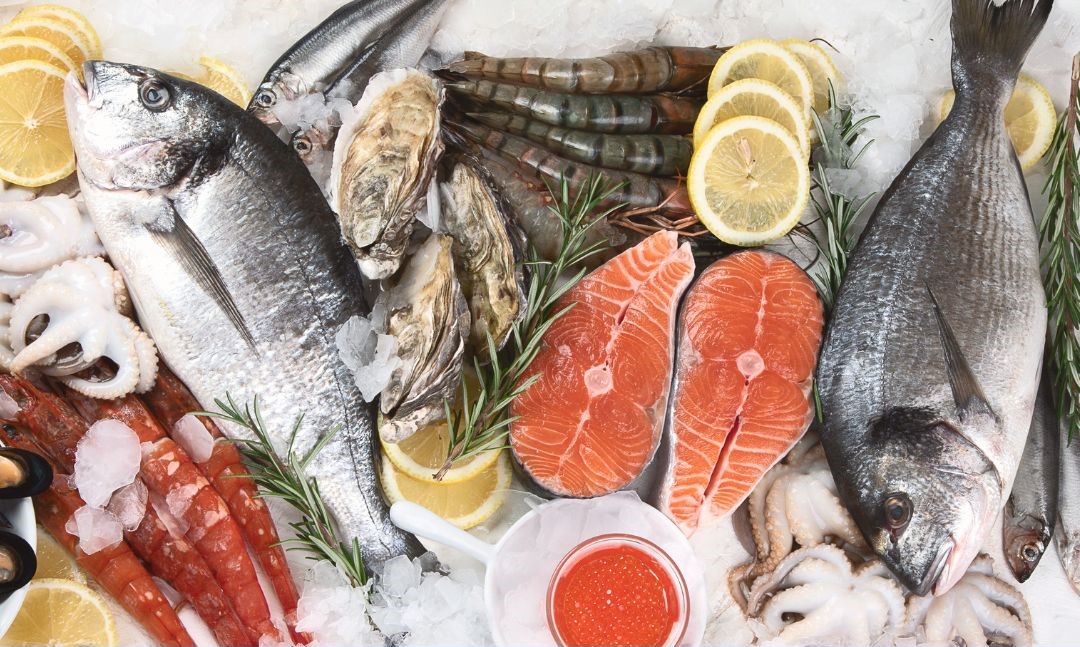Shaping Missouri Aquaculture with LU, One Vote at a Time
Office of Communications and Marketing
Young Hall
820 Chestnut Street
Jefferson City, MO 65101
 Lincoln University of Missouri’s Assistant Professor Moureen Matuha, Ph.D., and Project Coordinator Andrew Coursey will lead a consumer survey to explore Missourians' seafood preferences and support the growth of the state's aquaculture industry.
Lincoln University of Missouri’s Assistant Professor Moureen Matuha, Ph.D., and Project Coordinator Andrew Coursey will lead a consumer survey to explore Missourians' seafood preferences and support the growth of the state's aquaculture industry.
Aquaculture, the cultivation of fish, shellfish and other aquatic organisms in a controlled environment, is gaining importance as global demand for sustainable protein increases. While the U.S. aquaculture industry is expanding, Missouri's food fish production remains modest, with the industry primarily focused on pond stocking and ornamental fish rather than food fish. The aquaculture team at Lincoln University of Missouri aims to change this through a consumer survey led by Assistant Professor Moureen Matuha, Ph.D., and Project Coordinator Andrew Coursey. The survey aims to understand Missourians' preferences and behaviors around aquaculture and seafood. The insights will help identify opportunities of growth, educate stakeholders and develop marketing strategies for locally raised aquaculture products.
Missouri’s aquaculture industry is relatively small compared to other states. “Missouri has plenty of space and water for fish farming, but the number of operations remains low,” Coursey said. “We want to understand consumer preferences, raise awareness and grow the industry to meet the rising demand for fresh, healthy and sustainable animal protein.” Despite having access to high-quality water and a central location near large U.S. markets, Missouri’s aquaculture sector faces significant challenges, including harsh winters that limit growing seasons, high production costs, limited processing facilities and labor and transportation constraints.
A consumer study by the Missouri Aquaculture Association revealed that seafood consumption in Missouri is also well below the national average. While Americans consume about 14 pounds of seafood annually, Missourians eat half that amount, with only 1% of the seafood produced locally in the state. In 2019, Missouri’s aquaculture industry generated $12.7 million across 80 farms, according to the University of Missouri Extension—a stark contrast to the $1.9 billion contributed by cattle farms. This gap highlights the need to expand the state’s aquaculture sector to match its potential.
"The survey aims to uncover what influences seafood consumption, including factors like price, source, quality and availability," Matuha said. She hopes to educate consumers on the benefits of local aquaculture — such as sustainability, affordability, healthier diets and a stronger Missouri food system.
This effort aims to benefit both consumers and producers. Expanding food fish aquaculture provides farmers with opportunities to diversify income, adopt eco-friendly practices and boost regional economies. Leveraging consumer insights could help the industry grow, contributing to food security and economic development across the state.
Click here to participate in this survey. For more information, contact Dr. Moureen Matuha at MatuhaM@LincolnU.eduor 573-635-6247.
